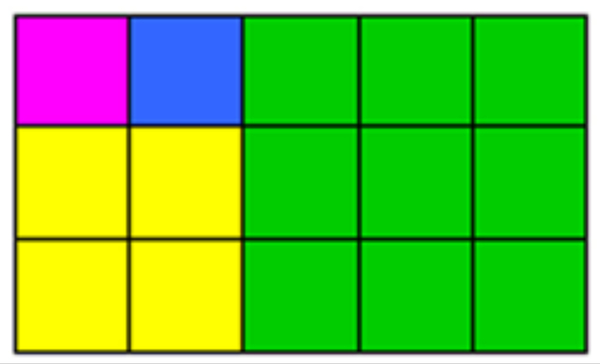Starting with a rectangular board
Integers and are each independently chosen uniformly and at random on the interval from to .
Then two players start with an grid of squares.
They play a game where each player takes turns removing an square, . The person to remove the last square loses the game.
For example, a game might be played as follows:

Player one takes the green square.
Player two takes magenta.
Player one takes yellow.
Player two takes blue. (and loses)
For how many of the possible starting boards does the player who goes first have a winning strategy?
Inspiration : Conversation with @Henry U
This is a follow-up to this problem.
The answer is 53.
This section requires Javascript.
You are seeing this because something didn't load right. We suggest you, (a) try
refreshing the page, (b) enabling javascript if it is disabled on your browser and,
finally, (c)
loading the
non-javascript version of this page
. We're sorry about the hassle.

For an n × 1 board it is straightforward to see that the second player wins for odd n . This includes 7 boards.
The second player can also win for a 4 × 2 or a 5 × 2 board. This is an additional 4 boards.
This is a total of 11 boards so far...
For all other boards (53 possibilities) the player who goes first can force a win.
The matrix below shows the strategies for each case... (Thanks to @Henry U for helping me get this started)
A is a win for the first player. B is a win for the second player.
Subscripts indicate strategies. The position in the array corresponds to the dimensions of the original board.
1 2 3 4 5 6 7 8 1 B T A T B T A T B T A T B T A T 2 A T A S A M B W B V A 2 A 2 A C 3 B T A M A S A L A C A C A C A C 4 A T B W A L A S A M A 4 A C A D 5 B T B V A C A M A S A L A 5 A C 6 A T A 2 A C A 4 A L A S A M A C 7 B T A 2 A C A C A 5 A M A S A L 8 A T A C A C A D A C A C A L A S